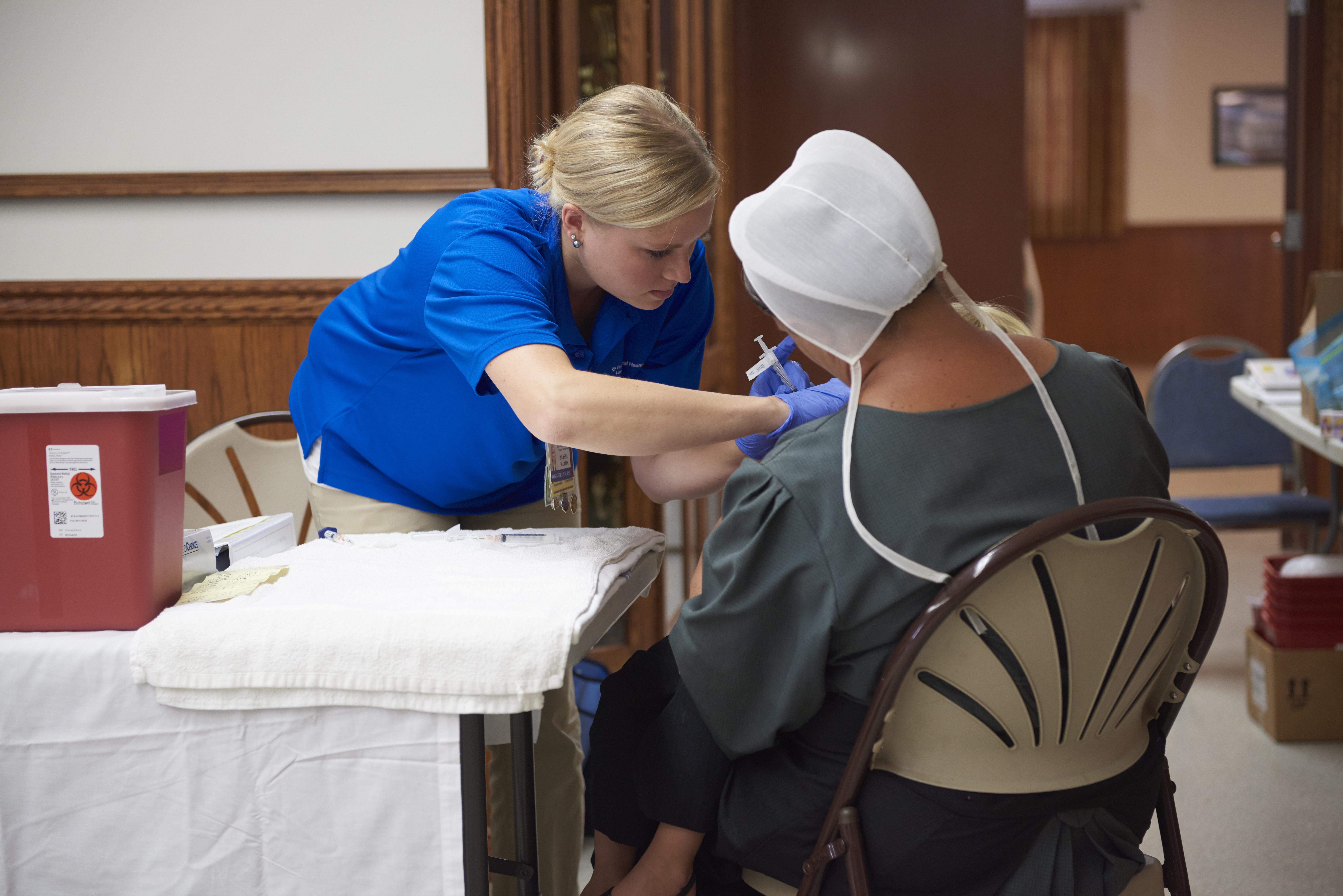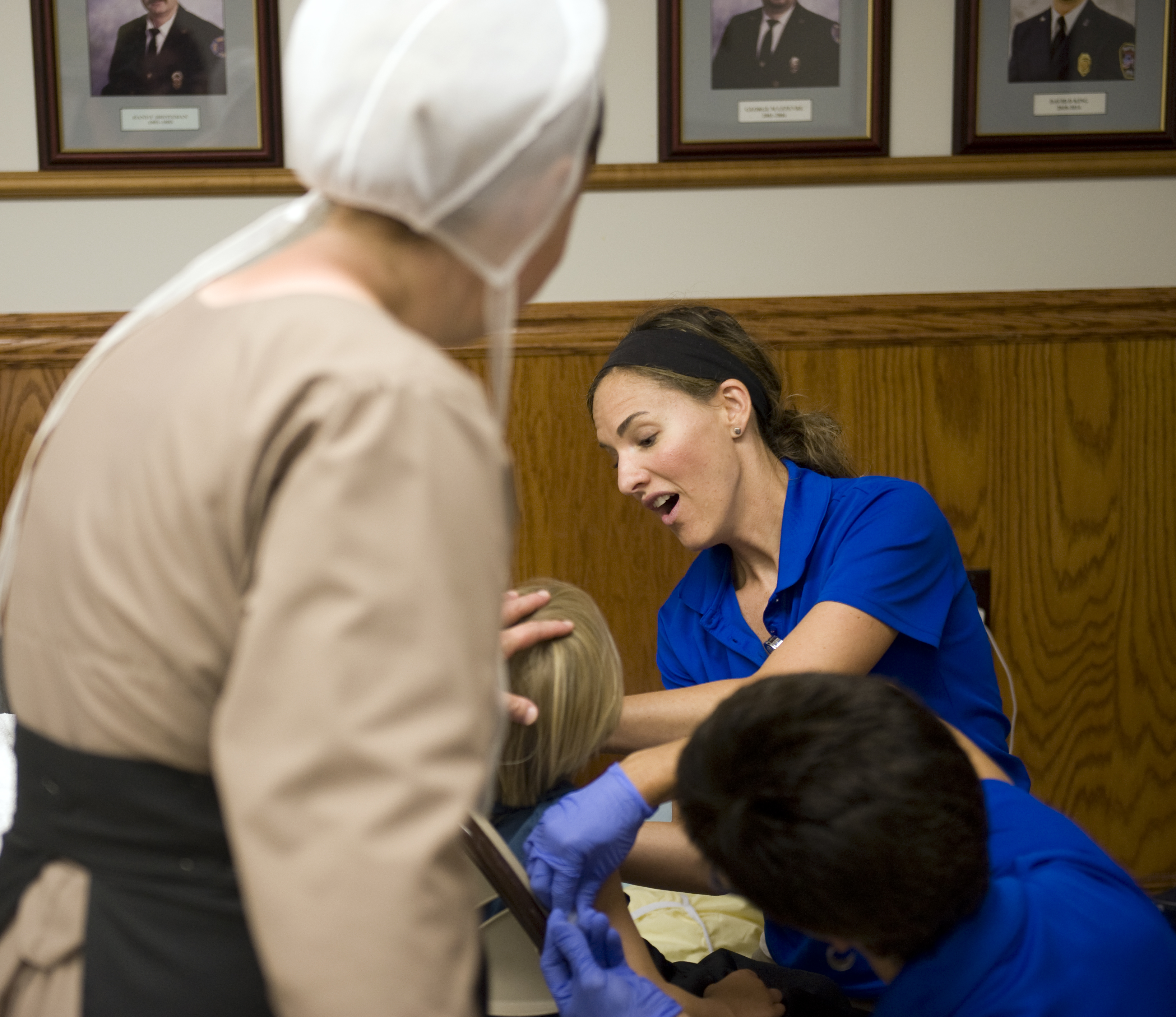
A vaccine against rubella, also known as German measles, has been available for half a century. But in 1991, an outbreak of the disease swept through several states, and hundreds of unvaccinated children and adults in Pennsylvania became infected.
Many of those affected were members of Amish communities. Without a public-health department in Lancaster County to rely on, Lancaster General Hospital, now part of the University of Pennsylvania Health System, organized an emergency response to vaccinate thousands of Amish children.
Today, that effort continues, now focused on long-term prevention of a wide variety of infectious diseases. Serving families who are uninsured or on medical assistance, both Amish and not, Lancaster General’s ChildProtect program has, to date, provided free vaccinations to more than 70,000 children.
“Even though the program originally started with an outbreak, it’s really expanded to serve a broader population beyond the Amish,” says Alice Yoder, director of community health and wellness for Penn Medicine Lancaster General Health (LG Health). “The first priority is to link people with a primary-care doctor, but, when there is a gap in accessing services, we offer immunization as a basic public-health function to improve the health of the communities we serve.”
In the early 1990s, the leadership of LG Health recognized the importance of forming a good relationship with the Amish in the area. The hospital’s CEO began holding regular meetings with Amish bishops. When the rubella outbreak erupted, the community-health team at the hospital quickly organized a massive vaccination effort, one that relied upon the growing relationship between the Amish and LG Health.
“We knew we had to provide immunization clinics that would meet the Amish needs,” Yoder says. “It had to be geographically convenient because they travel by buggy, and it had to be a place they felt comfortable.”
The Amish often volunteer with their local fire halls, which serve as familiar central locations in rural parts of the county. The LG Health team partnered with area fire halls and local grocery stores frequented by the Amish. Using nurses and other staff, the 1991 launch of ChildProtect resulted in 5,000 children receiving vaccinations in the first year.
Since then, LG Health has bolstered its efforts in serving the community. In 1992 the Community Health and Wellness department was formed, and staff developed a community service pool of registered nurses, health educators, dietitians, and other health professionals who can be called upon to work when needed. “What that does is allow us to be nimble,” Yoder says. “Having a large number of nurses and other health care professionals, we can respond to many public health needs in a very quick and efficient fashion.”
ChildProtect offers vaccination clinics 11 months of the year to children ages one month to 18 years. “We advertise, but mostly people hear by word-of-mouth,” says Mary LeVasseur, manager of community health at LG Health. “It’s a walk-in clinic so people know that, once a month, we’ll be at the fire hall and they can get their children’s immunizations there.”
The program offers all of the vaccines recommended by the United States Centers for Disease Control and Prevention, sometimes holding special clinics focused on the influenza vaccine as flu season approaches. While ChildProtect began as an effort focused specifically on providing health care to the Amish, any child without health insurance or on a medical-assistance program, such as CHIP, is able to receive free vaccines. “We hear families say that they wouldn’t be able to get their children vaccinated if it weren’t for these clinics,” LeVasseur says.
Children who participate in ChildProtect are automatically enrolled in the health-records system at LG Health, meaning their health and immunization records are maintained electronically, making it easier to know which shots they may be scheduled to receive.
In addition to vaccinations, families receive health education through the program, as well as through other outreach efforts by LG Health.
“One effort started under the leadership of Penn’s Abramson Cancer Center,” says LeVasseur. “We work with women in the Amish community on cancer prevention such as the importance of screening mammography and cervical exams, as well as chronic disease and general health and wellness.”
Yoder and LeVasseur emphasize that ChildProtect does not replace primary care—indeed nurses and health educators strive to connect participants with primary-care doctors if they don’t have one already—but fills a gap for the community that LG Health serves.
“People are very grateful that the program is available and continues to be available,” says Yoder.








